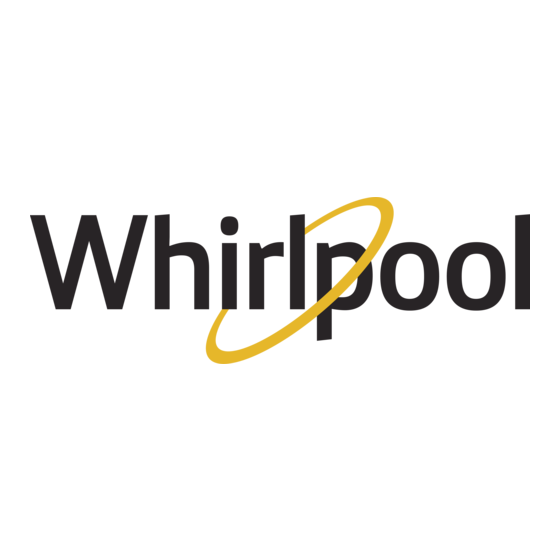Whirlpool 3RLEQ8033 Kurulum Talimatları Kılavuzu - Sayfa 5
Kurutucu Whirlpool 3RLEQ8033 için çevrimiçi göz atın veya pdf Kurulum Talimatları Kılavuzu indirin. Whirlpool 3RLEQ8033 8 sayfaları. Electric and gas dryers
Ayrıca Whirlpool 3RLEQ8033 için: Kullanım ve Bakım Kılavuzu (12 sayfalar), Kurulum Talimatları Kılavuzu (8 sayfalar), Kurulum Talimatları Kılavuzu (8 sayfalar), Kullanım ve Bakım Kılavuzu (12 sayfalar)

Venting Requirements
WARNING
Use a heavy metal vent.
Do not use a plastic vent.
Do not use a metal foil vent.
Failure to follow these instructions can result in death
or fire.
WARNING:
To reduce the risk of fire, this dryer MUST BE
EXHAUSTED OUTDOORS.
■ The dryer exhaust must not be connected into any gas vent,
chimney, wall, ceiling, or concealed space of a building.
■ Do not use an exhaust hood with a magnetic latch.
■ Do not install flexible non-metal vent.
■ Do not install metal vent that is smaller than 10 cm (4") in
diameter.
■ Do not install flexible vent in enclosed walls, ceilings or floors.
■ 10 cm (4") heavy metal vent and clamps must be used.
■ Use 10 cm (4") clamps to seal all joints. Vent must not be
connected or secured with screws or other fastening devices
which extend into the interior of the vent. Do not use duct
tape.
Improper venting can cause moisture and lint to collect
indoors, which may result in:
■ Moisture damage to woodwork, furniture, paint,
wallpaper, carpets, etc.
■ Housecleaning problems and health problems.
IMPORTANT: Observe all governing codes and ordinances.
Use a heavy metal vent. Do not use plastic or metal foil vent.
Rigid metal vent is recommended to prevent crushing and
kinking.
Flexible metal vent must be fully extended and supported when
the dryer is in its final position. Remove excess flexible metal vent
to avoid sagging and kinking that may result in reduced airflow
and poor performance.
An exhaust hood should cap the vent to prevent rodents and
insects from entering the home.
Exhaust hood must be at least 30.5 cm (12") from the ground or
any object that may be in the path of the exhaust (such as
flowers, rocks or bushes, etc.).
If using an existing vent system, clean lint from the entire length
of the system and make sure exhaust hood is not plugged with
lint. Replace any plastic or metal foil vent with rigid metal or
flexible metal vent.
Back pressure in any exhaust system used must not exceed
15.2 mm (0.6") in water column measured with an incline
manometer at the point that exhaust vent connects to dryer.
Fire Hazard
Plan Vent System
Route the Vent
The exhaust outlet is located at the center of the rear of the dryer.
The exhaust vent can be routed up, down, left, right or straight
out the back of the dryer.
A
A. Standard rear offset exhaust installation
B. Left or right side exhaust installation
C. Bottom exhaust installation
The design of the flue system should ensure that any condensate
formed when operating the appliance from cold, is either retained
and subsequently evaporated or discharged. Following these
installation instructions should adequately meet this requirement.
Vent System Length
1. Select the route that will provide the straightest and most
direct path outdoors. Plan the installation to use the fewest
number of elbows and turns. Avoid making 90° turns. When
using elbows or making turns, allow as much room as
possible. Bend vent gradually to avoid kinking.
A
Exhaust Air Flow
A. Better
B. Good
2. Determine vent length.
The maximum length of the exhaust system depends upon:
■ The type of vent (rigid metal or flexible metal).
■ The number of elbows used.
■ Type of hood.
Recommended hood styles are shown here.
A
10.2 cm
(4")
A. Box hood style
B. Louvered hood style
C
B
B
A
10.2 cm
(4")
5
